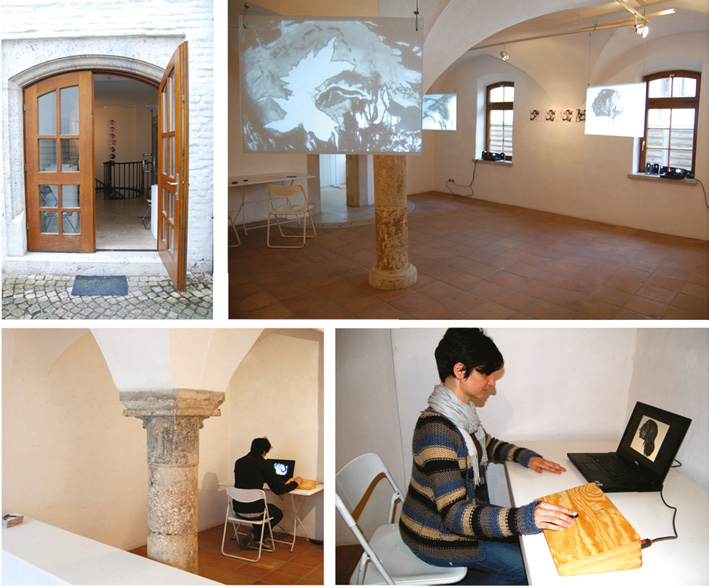‘Aesthetic Aha’: The pleasure of gaining insight
Detecting sheep within clouds, feeling the relieve when a strong tension in a piece of music resolves or getting a grip on what Picasso might have concealed in one of his Cubist artworks—experience is dynamic and marked by semantic instabilities on one hand and insights on the other. The ‘Aesthetic Aha!’ effect reveals the hedonic potential of such moments of temporary semantic stability: liking of simple two-tone images increases after having detected a facial Gestalt in it (Muth & Carbon, 2013). By another empirical approach we assessed continuous evaluations of an artistic movie in which figural forms are continuously transformed into random forms or new Gestalt. The emergence of figurative elements lead to increased liking and already 1.5 seconds before this ‘Aesthetic Aha!’ the scene was evaluated to be more interesting (Muth, Raab & Carbon, 2015; see Figure 1 and video below). The effect of insight could be strengthened in a follow-up study when detectability of the identifiable Gestalts was very difficult at first but increased over time: Participants enjoy insights even more if they follow perceptual challenge (Muth, Raab, & Carbon, 2016).

Read more:
-
Muth, C., Ebert, S. A., Marković, S. & Carbon, C. C. (2019). ‘Aha’ptics: Enjoying an Aesthetic Aha during haptic exploration. Perception, 48(1), 3-25. {IF=1.371}
-
Muth, C., & Carbon, C. C. (2013). The Aesthetic Aha: On the pleasure of having insights into Gestalt. Acta Psychologica, 144(1), 25-30. doi: 10.1016/j.actpsy.2013.05.001
-
Muth, C., Raab, M., & Carbon, C. C. (2015). The stream of experience when watching artistic movies. Dynamic aesthetic effects revealed by the continuous evaluation procedure (CEP). Frontiers in Psychology, 6(365). doi: 10.3389/fpsyg.2015.00365
-
Muth, C., Raab, M. H., & Carbon, C. C. (2016). Semantic stability is more pleasurable in unstable episodic contexts. On the relevance of perceptual challenge in art appreciation. Frontiers in Human Neuroscience, 10(43). doi: 10.3389/fnhum.2016.00043